Primax Electronics MMOWFFKUL HP WiFi Mobile Mouse User Manual Wi Fi Mouse QSG modify
Primax Electronics Ltd HP WiFi Mobile Mouse Wi Fi Mouse QSG modify
User Manual
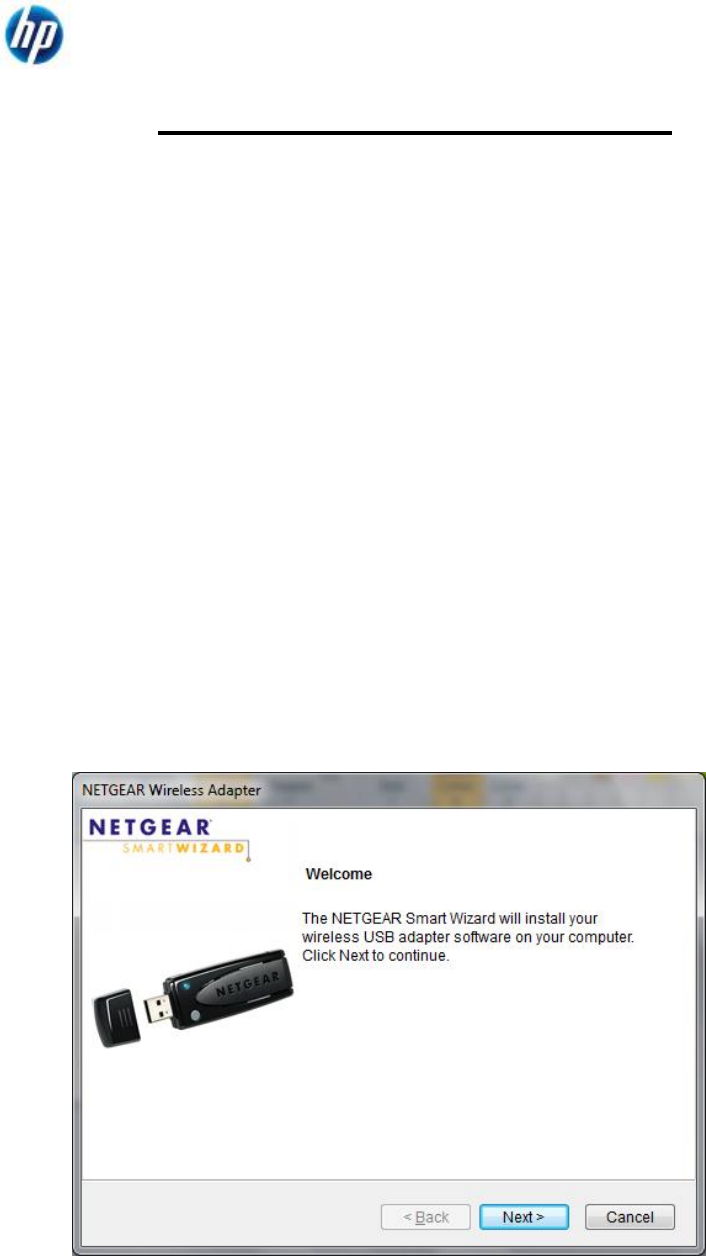
Hewlett-Packard MOWFFKUL
Wi-Fi Mouse Quick Start Guide
1. System requirement:
a. Microsoft Windows 7 Certificate notebook
b. Microsoft Windows 7 Certificate Wireless dongle running on Win7 notebook.
(ex: NETGEAR WNDA3100v2)
c. WiFi mouse with FW v02.01.03.000 above.
2. Software
a. WNDA3100v2_1.2_230-10601-03_setup.exe (This is for WNDA3100v2
wireless card)
b. Ozmo software PAN driver (WinDriver-1-5-46-0)
c. Wi-Fi Pairing Utility (Wi-Fi Pair_2011-1-12)
3. Installation steps
a. Install Wireless Card driver ( ex: NETGEAR WNDA3100v2)
a.1 – Double-click on the WNDA3100v2_1.2_230-10601-03_setup.exe then
click “Next”
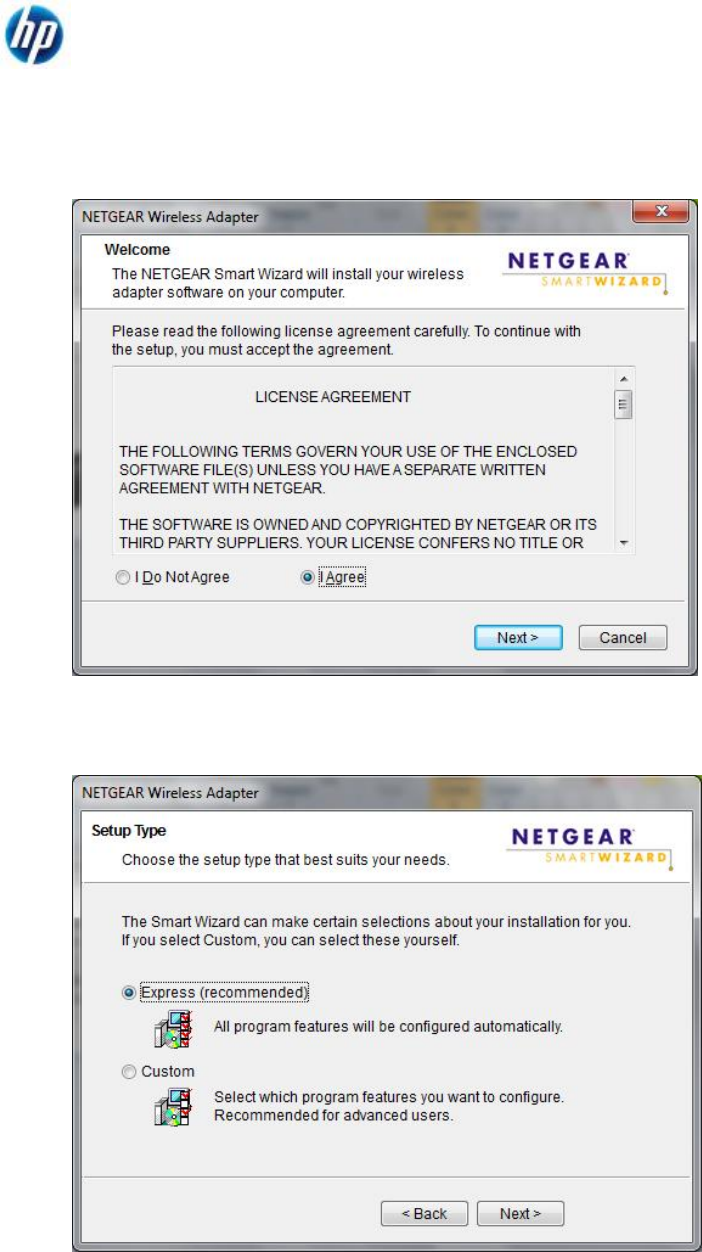
Hewlett-Packard MOWFFKUL
a.2 – Select “I Agree” then Click “Next”
a.3 – Select “Express” then click “Next”
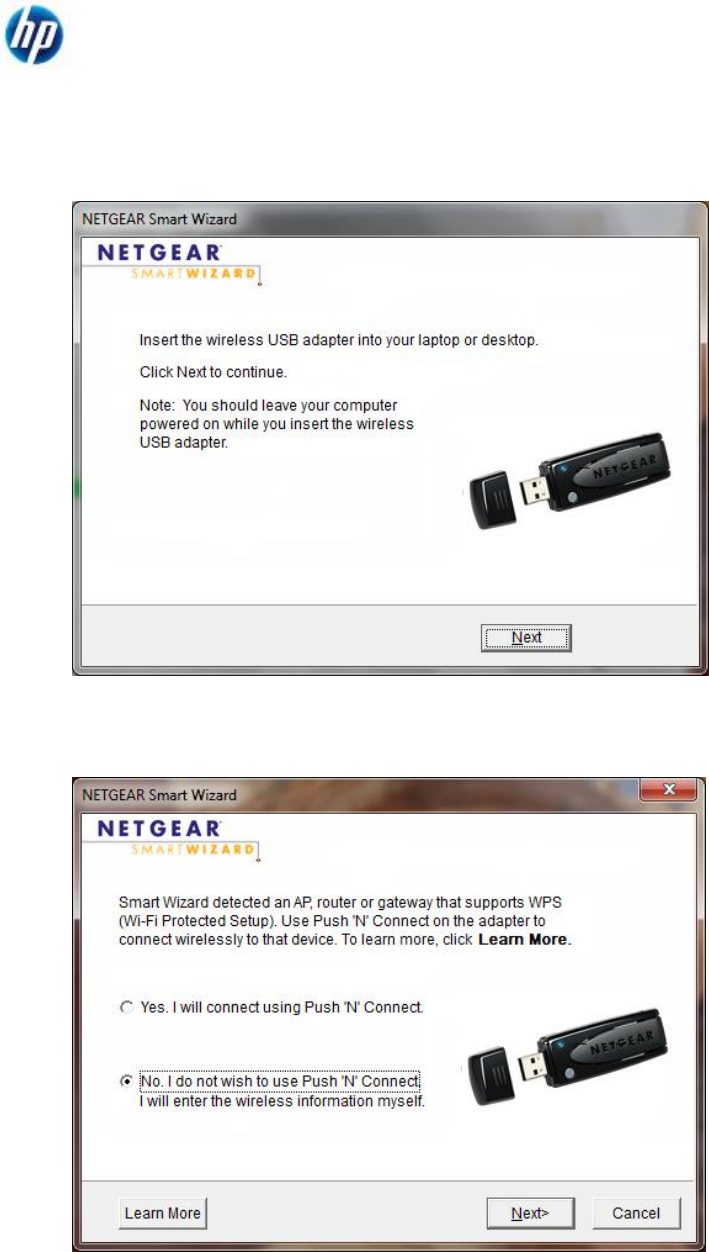
Hewlett-Packard MOWFFKUL
a.4 – Click “Next”
a.5 – Select “No. I do not….” Then click “Next”
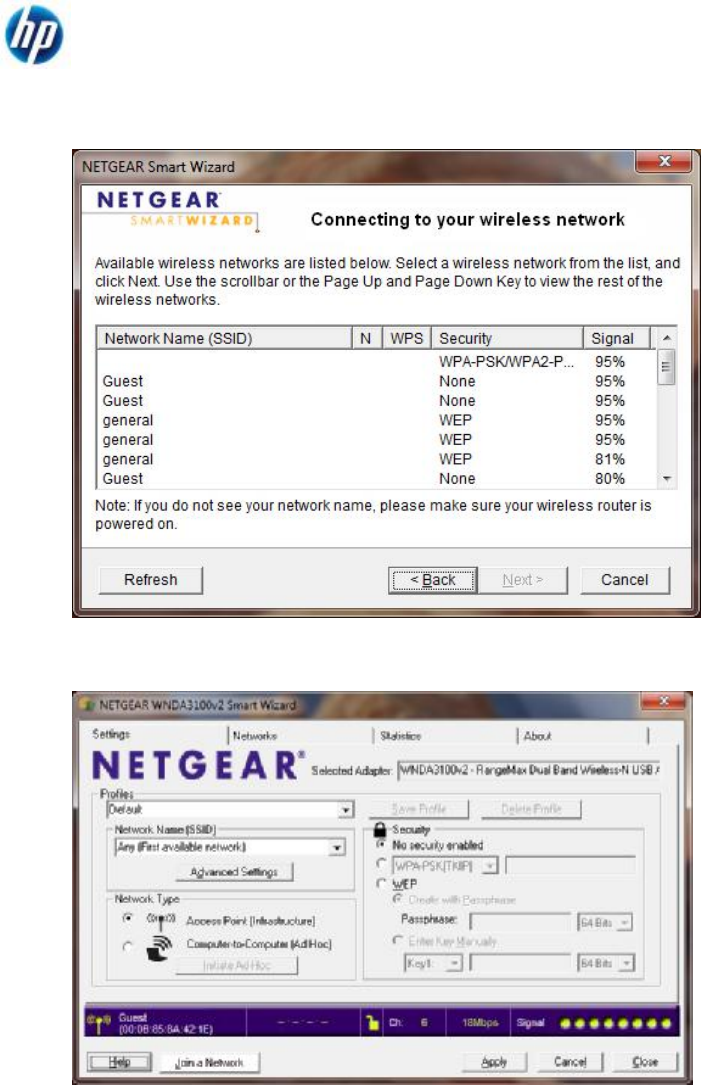
Hewlett-Packard MOWFFKUL
a.6 – Click “Next”
a.7 – Click “Close”
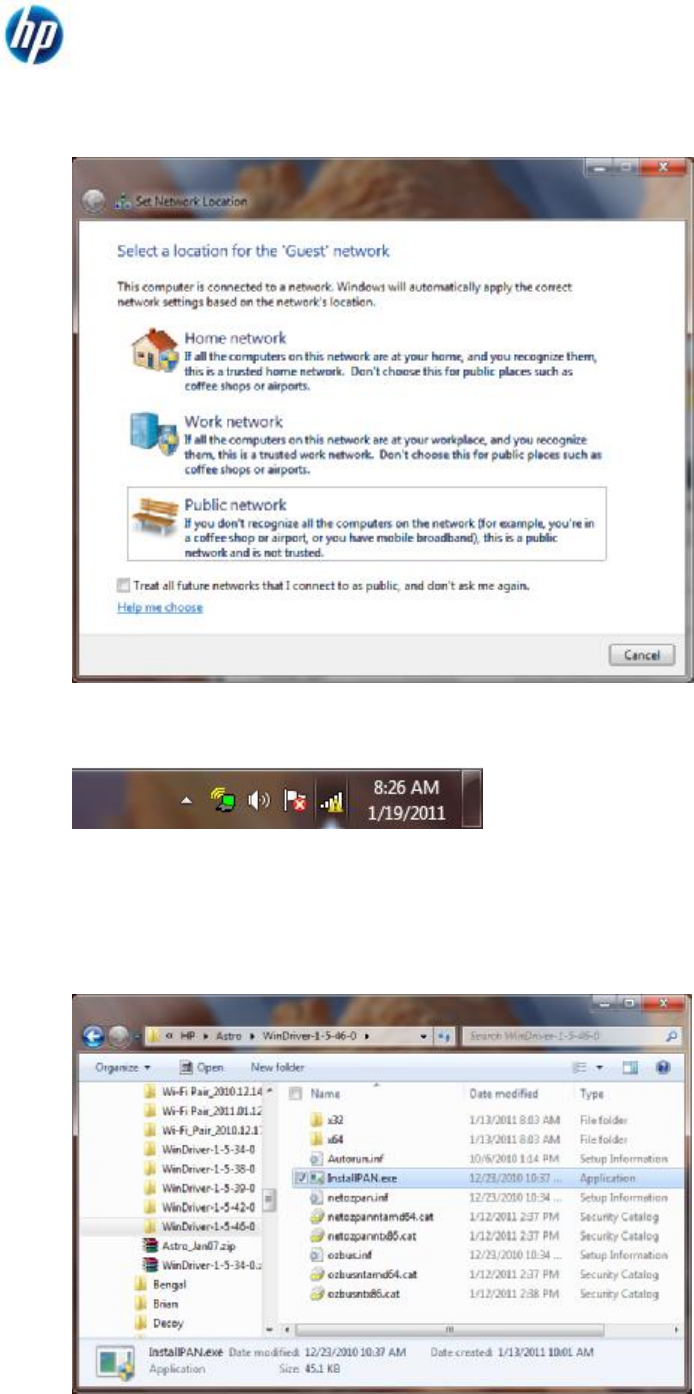
Hewlett-Packard MOWFFKUL
a.8 – Select “Public network”
a.9 – WiFi radio is open and connected.
b. Install Ozmo Software PAN
b.1 – Double click on the InstallPAN.exe
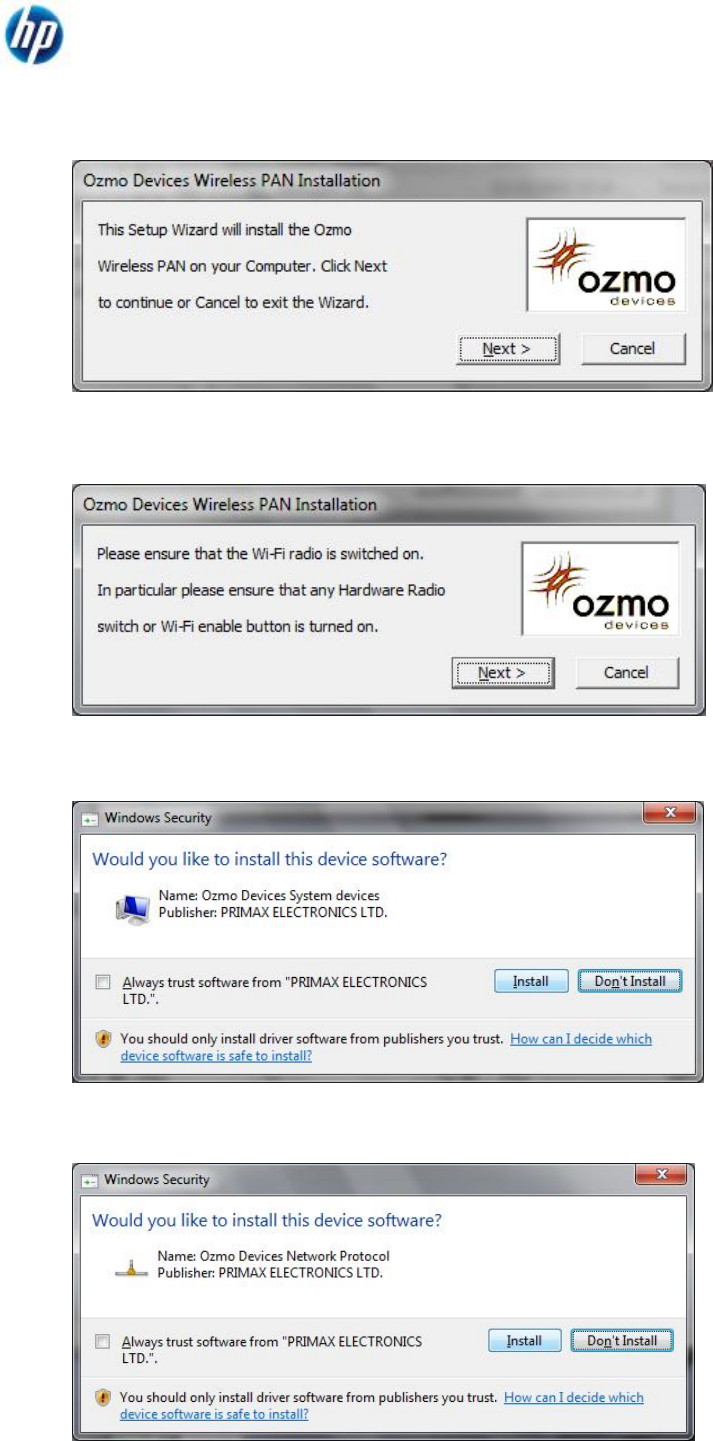
Hewlett-Packard MOWFFKUL
b.2 – Click “Next”
b.3 – Click “Next”
b.4 – If this dialog show up, please click “Install”
b.5 – If this dialog show up, please click “Install”
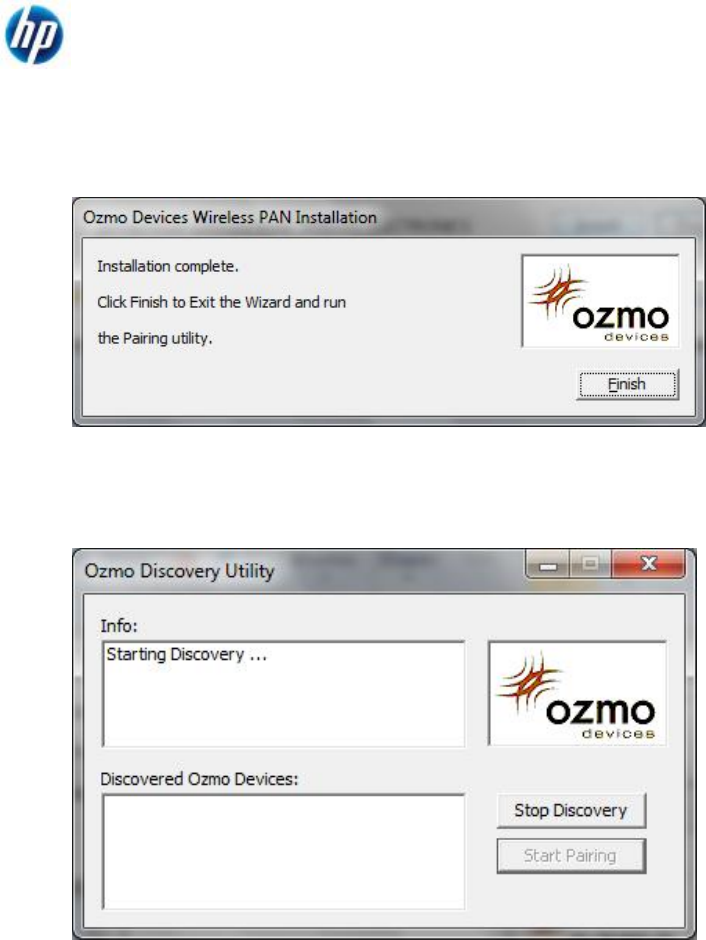
Hewlett-Packard MOWFFKUL
b.6 – Click “Finish”
b.7 – Close this window
c. Pairing with Wi-Fi mouse
c.1 – Open the Wi-Fi Pairing Wizard by double click on the “WiFiPair.exe”.
(note: if your system is Win7-64bit, please locate to the folder x64)
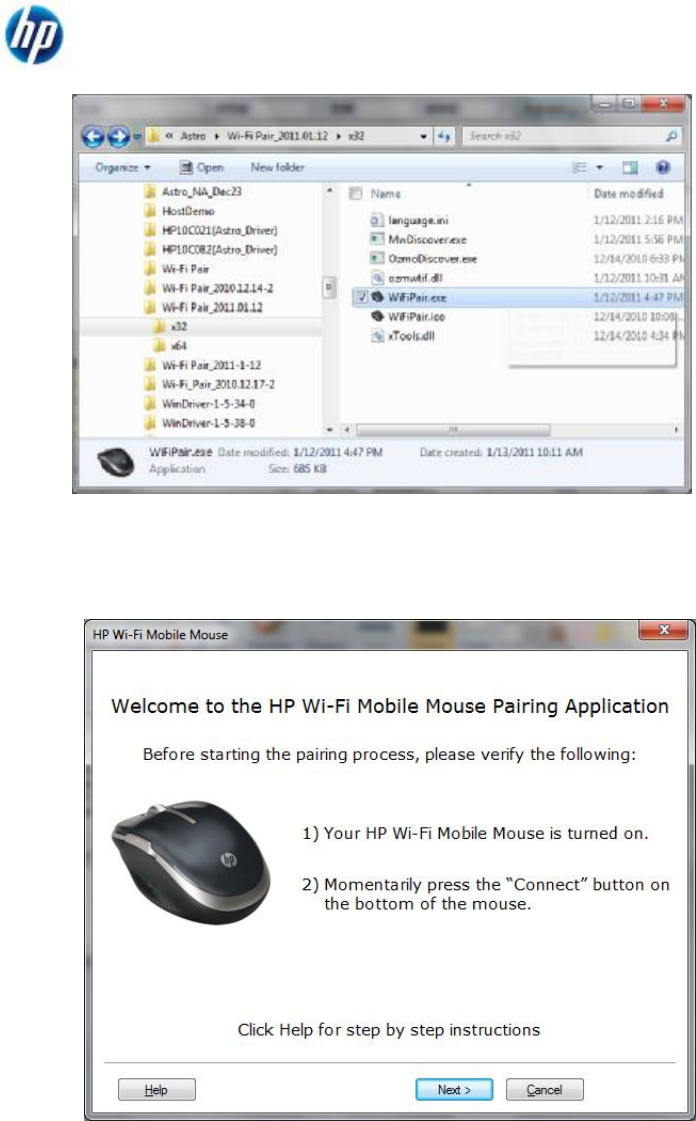
Hewlett-Packard MOWFFKUL
c.2 – Power on your Wi-Fi mouse and press the “Connect” button on the
bottom of the mouse. Then click “Next”
c.3 – Wait for the mouse be detected.
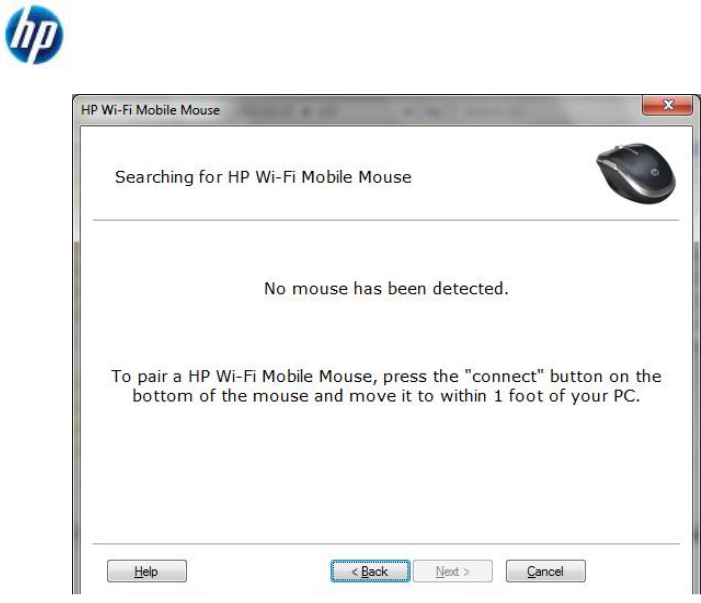
Hewlett-Packard MOWFFKUL
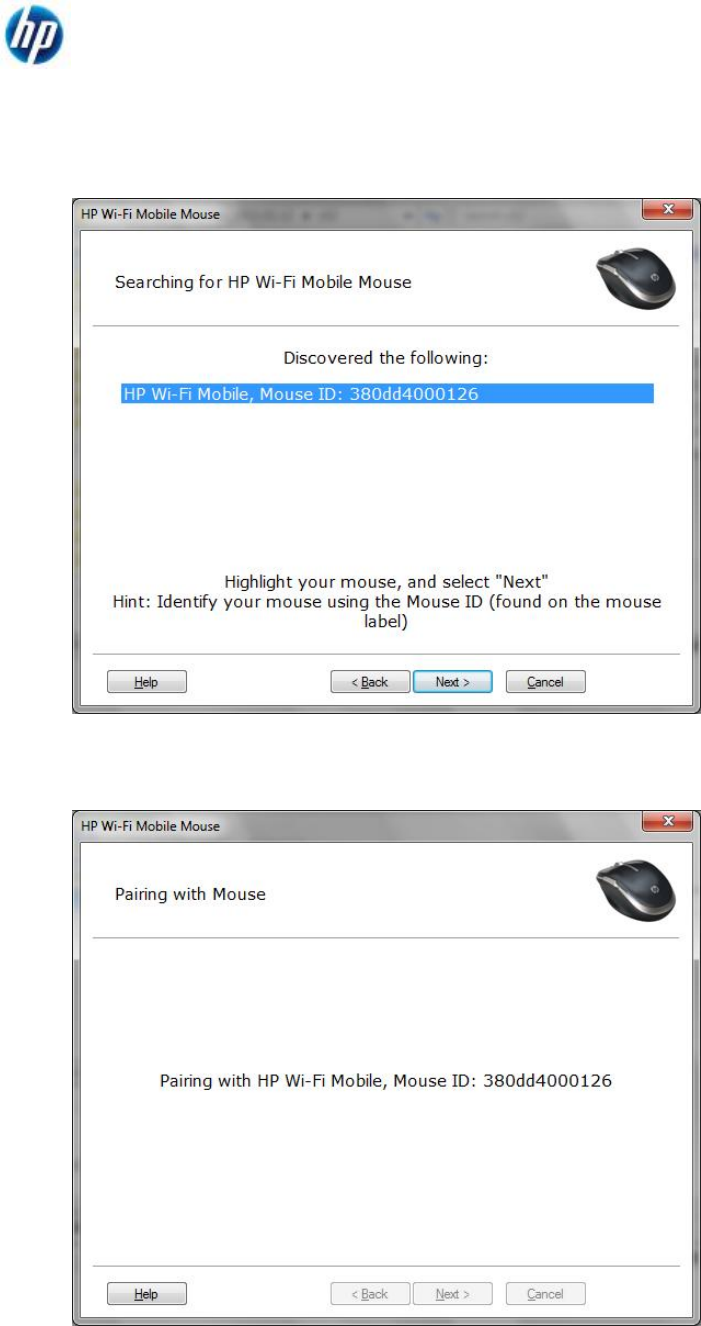
Hewlett-Packard MOWFFKUL
c.4 – Select the mouse which you want to connect with. Then click “Next”
c.5 – Pairing with mouse
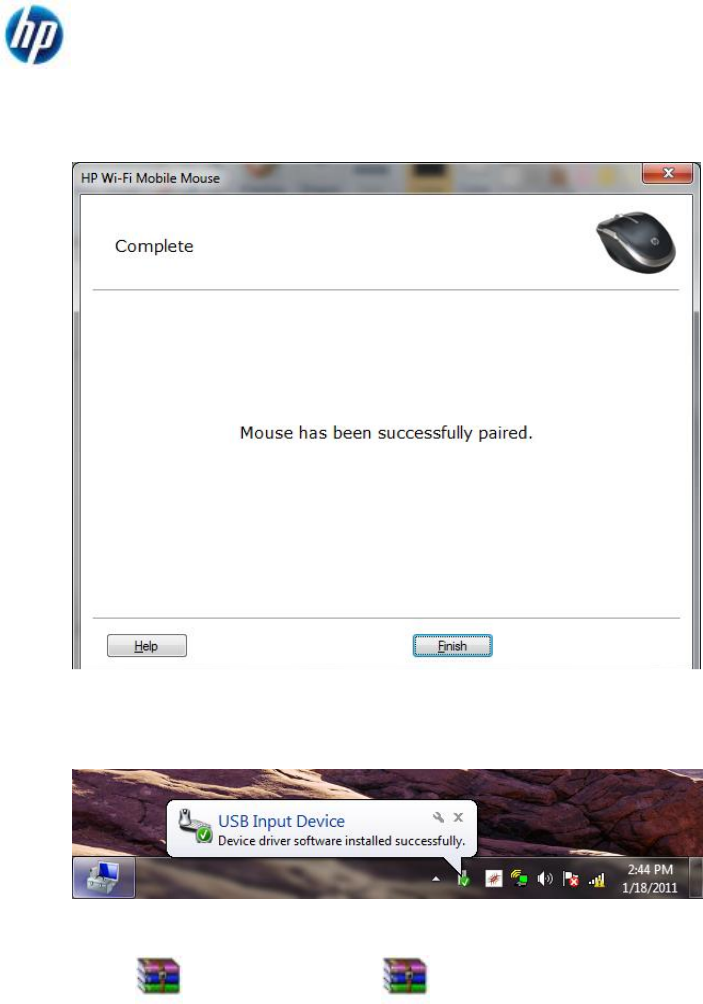
Hewlett-Packard MOWFFKUL
c.6 – Pairing successfully
c.7 – Found new “USB Input Device” and your Wi-Fi mouse is workable now.
Wi-Fi Pair2011-1-12.rar WinDriver-1-5-46-1.zip

Hewlett-Packard MOWFFKUL
Federal Communication Commission Interference Statement
This equipment has been tested and found to comply with the limits for a Class B digital device,
pursuant to Part 15 of the FCC Rules. These limits are designed to provide reasonable protection
against harmful interference in a residential installation. This equipment generates, uses and can
radiate radio frequency energy and, if not installed and used in accordance with the instructions, may
cause harmful interference to radio communications. However, there is no guarantee that
interference will not occur in a particular installation. If this equipment does cause harmful
interference to radio or television reception, which can be determined by turning the equipment off
and on, the user is encouraged to try to correct the interference by one of the following measures:
- Reorient or relocate the receiving antenna.
- Increase the separation between the equipment and receiver.
- Connect the equipment into an outlet on a circuit different from that to which the receiver is
connected.
- Consult the dealer or an experienced radio/TV technician for help.
This device complies with Part 15 of the FCC Rules. Operation is subject to the following two
conditions: (1) This device may not cause harmful interference, and (2) this device must accept any
interference received, including interference that may cause undesired operation.
FCC Caution: Any changes or modifications not expressly approved by the party responsible for
compliance could void the user's authority to operate this equipment.
For operation within 5.15 ~ 5.25GHz frequency range, it is restricted to indoor environment, and the
antenna of this device must be integral.
IMPORTANT NOTE:
FCC Radiation Exposure Statement:
This equipment complies with US/Canada radiation exposure limits set forth for an uncontrolled
environment. This equipment should be installed and operated with minimum distance 20cm
between the radiator & your body.
This transmitter must not be co-located or operating in conjunction with any other antenna or
transmitter.

Hewlett-Packard MOWFFKUL
IC Statement
Operation is subject to the following two conditions: 1) this device may not cause interference and 2)
this device must accept any interference, including interference that may cause undesired operation
of the device.
IMPORTANT NOTE:
Radiation Exposure Statement:
This equipment complies with IC radiation exposure limits set forth for an uncontrolled environment.
This equipment should be installed and operated with minimum distance 20cm between the radiator
& your body.
Caution:
The device for the band 5150-5250 MHz is only for indoor usage to reduce potential for harmful
interference to co-channel mobile satellite systems.
High power radars are allocated as primary users (meaning they have priority) of 5250-5350 MHz and
5650-5850 MHz and these radars could cause interference and/or damage to LE-LAN devices.
Ce dispositif est conforme à la norme CNR-210 d'Industrie Canada applicable aux appareils radio
exempts de licence. Son fonctionnement est sujet aux deux conditions suivantes: (1) le dispositif ne
doit pas produire de brouillage préjudiciable, et (2) ce dispositif doit accepter tout brouillage reçu, y
compris un brouillage susceptible de provoquer un fonctionnement indésirable.
NOTE IMPORTANTE: (Pour l'utilisation de dispositifs mobiles)
Déclaration d'exposition aux radiations:
Cet équipement est conforme aux limites d'exposition aux rayonnements IC établies pour un
environnement non contrôlé. Cet équipement doit être installé et utilisé avec un minimum de 20 cm
de distance entre la source de rayonnement et votre corps.
les dispositifs fonctionnant dans la bande 5 150-5 250 MHz sont réservés uniquement pour une
utilisation à l’intérieur afin de réduire les risques de brouillage préjudiciable aux systèmes de satellites
mobiles utilisant les mêmes canaux;
(ii) De plus, les utilisateurs devraient aussi être avisés que les utilisateurs de radars de haute puissance
sont désignés utilisateurs principaux (c.-à-d., qu’ils ont la priorité) pour les bandes 5 250-5 350 MHz et
5 650-5 850 MHz et que ces radars pourraient causer du brouillage et/ou des dommages aux
dispositifs LAN-EL.